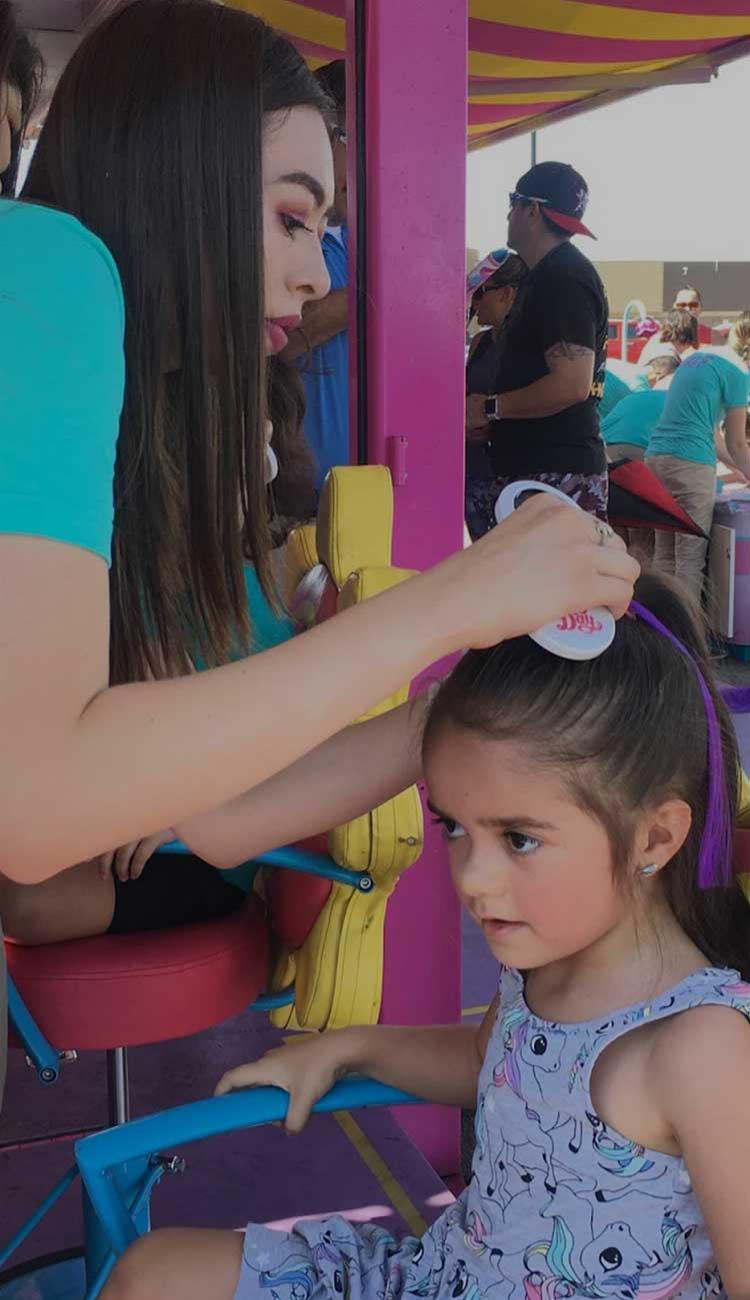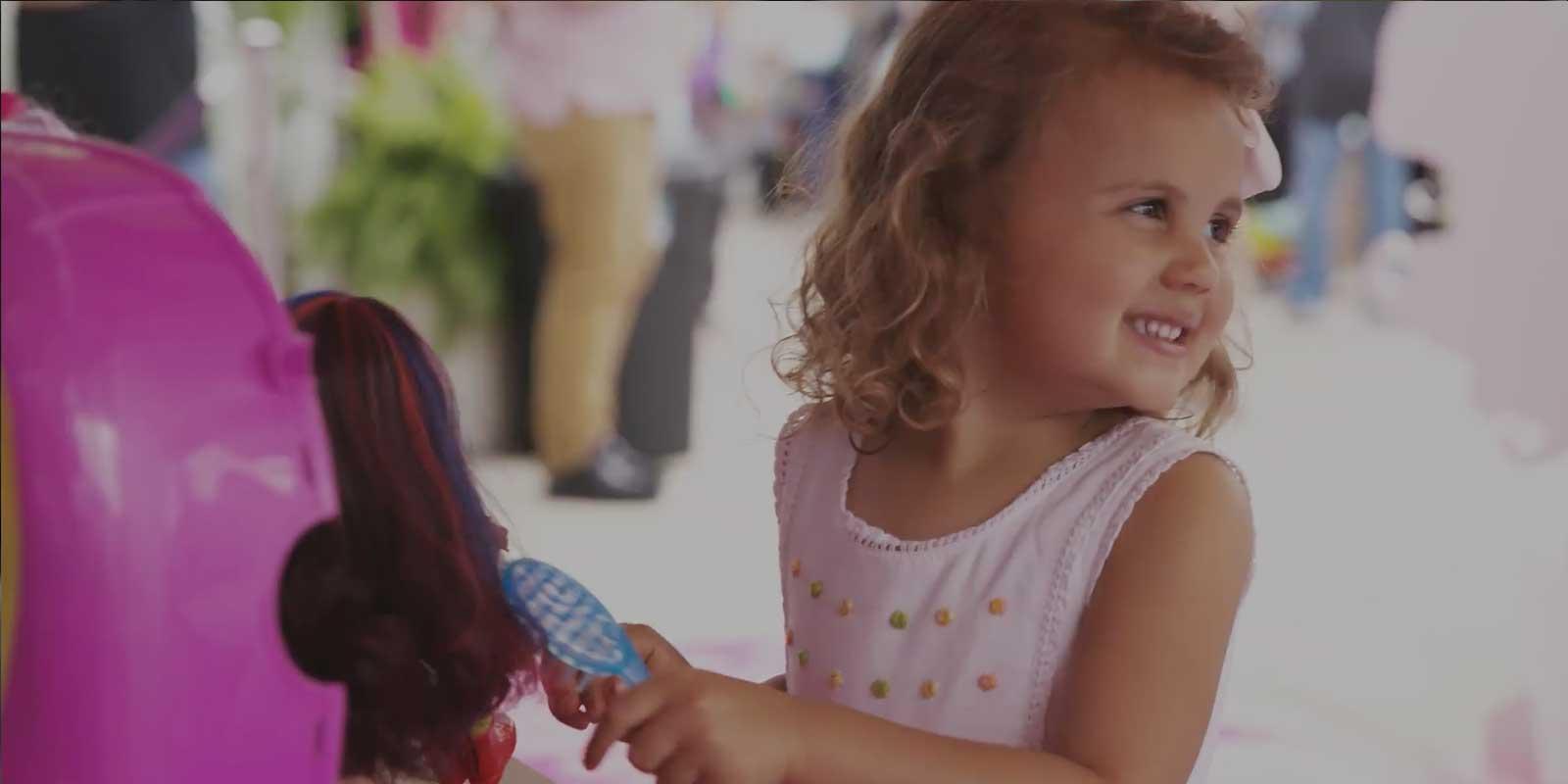Jan 29, 2019
Consumers want experiences, so retailers are finding new ways to turn shopping into an event.
When weekend shoppers pulled into Walmart’s parking lot in Houston last summer, they found it transformed into the colorful world of Nickelodeon’s Sunny Day. Fans of the series—about a cheerful 10-year-old salon owner, her two best friends, and her puppy, recognized the set-up as Sunny’s Glam Vanity.
Visitors were invited to play in Sunny’s world. They took pictures with characters and brand ambassadors treated them to colorful hair extensions, nail decals, and temporary tattoos. They could also play with and purchase the newly released collection of toys. At day’s end, the tour packed up and moved to another stop in the 55-city Sunny Day Tour. For each location, the sales of Sunny Day merchandise increased tenfold, on average, according to Nickelodeon’s consumer products team.
This is just one example of how retailers—which are now competing with the convenience of online shopping—are getting creative to entice consumers to go to physical stores. This is causing the integration of retail and entertainment, or retailtainment, to become increasingly common (and the effects multiplied thanks to social media amplification). In fact, the trend has been touted as the thing that could save retail.
“We’re hearing from most if not all of our brick and mortar partners that driving foot traffic into stores and engaging shoppers when they get there is more important than ever,” says Jessica Murphy, vice president, retail marketing at Viacom/Nickelodeon Consumer Products.
"Our retailers are constantly tasking us with finding ways to enhance the shopping experience and drive people to stores."
These activations come in many forms. The weekend before Halloween, Target stores nationwide held a themed trick- or- treat event with giveaways and the screening of a new episode. Nickelodeon also partnered with Amazon on a Rise of the Teenage Mutant Ninja Turtles activation in celebration of both the Turtles’ toy launch and Amazon’s first 4Star Store in New York City. There were photo-ops with the characters, a deejay, a raffle every hour and a product showcase.
To gear up for the holiday season, Walmart stores nationwide held toy-themed events, with demonstrations of the PAW Patrol: Mighty Pups Flip & Fly vehicle and Rise of the Teenage Mutant Ninja Turtles deluxe action figures in November. Kids received a countdown to the holidays “wish list” poster featuring Nickelodeon characters.
“Our retailers are constantly tasking us with finding ways to enhance the shopping experience and drive people to stores,” says Marielle Donahue, director of retail marketing and social media strategy at Viacom/Nickelodeon consumer products. “They’re asking us, 'How do we event-ize the shopping experience?’”
Brands are capitalizing on the well-documented phenomenon that millennials (those born between 1980 and 1996) value experiences. They post about them on social media, creating invaluable word-of-mouth hype. Just as sales are important, so is engagement with a brand since it drives loyalty, creates greater brand awareness, and increases content viewership.
That’s partly why Instagrammable experiences like Candytopia, the Museum of Ice Cream, Mickey: The True Original Exhibition and Color Factory are popping up.
“Our goal was to make it an Instagram playground by bringing the show to life,” says Donahue, of the Sunny Day mobile tour that ran from May 5 to August 4. “If someone shares their Sunny Day experience online, it generates awareness for the products.” That was particularly important for Sunny Day, since it was a relatively new show and the consumer products launched on May 1.
Creating “a happy place” for consumers.
Retailtainment comes in all shapes and sizes. There’s the 68,000 square foot Nike flagship store in New York City’s SoHo that houses half of a basketball court, an enclosed soccer trial area, and treadmills where runners can try out new sneakers. The LEGO House in Billund, Denmark, showcases mind-blowing Lego creations like the nearly 50-foot tall tree built entirely out of Legos and a masterpiece gallery that displays creations from Lego builders globally. There are also multiple zones for visitors to play in, restaurants, and, of course, a store.
For the holiday season, Bloomingdale’s flagship store in Manhattan opened a small ice skating rink within the Ralph Lauren men’s section. The rink, which was surrounded by faux trees, a wooden fence, and a bench made of tree branches, fit in well within the all-American look of the Ralph Lauren section. To the side was a Ralph’s coffee bar that served complimentary hot chocolate and two virtual reality pods offering sleigh rides. Customers could climb into lifesize snow globes—the perfect Instagram moment.
Some brands naturally lend themselves to events that foster community-building. Take the Canadian outdoor clothing and gear company, Arc’teryx. Its stores regularly hold wax and wine meetups, where customers can have their skis and snowboards waxed for free while they sip wine and listen to a local expert discuss ski trails while a DJ plays music. It also holds hack and repair events with outdoor enthusiasts who demonstrate how to optimize Arc’teryx gear. Visitors are encouraged to bring their own equipment.
“The idea is to come in and meet like-minded people and talk with a local expert or athlete who will have great information,” says Julia Brunzell, manager, retail design and brand experience at Arc’teryx. “The goal is that they buy stuff.”
For the competitive toy industry, retailtainment can be the key to standing out in a crowded marketplace as content is turned into consumer products and vice versa. In October, the manufacturer of Calico Critters held a one-day pop-up experience at Lady Mendl’s Tea Salon in New York City to introduce a new line of toys and a Netflix series that debuted November 1. Visitors were invited to play inside a lifesize replica of the playset and watch a clip of the series.
Last Spring Moose Toys, the manufacturer of Shopkins, created a pop-up cafe in an art gallery in Tribeca in Manhattan for four days. Reservations were required and sold out within one minute of going live. The 400 customers who secured reservations were served macaroons and croissants and got a preview of the Shopkins Live theatrical tour. Visitors could take pictures at the wall lined with 1,600 Shopkins figures.
“It was about exposure on social media,” says Adrienne Appell, spokesperson for the Toy Industry Association. “And a pop-up has the feeling of exclusivity. It’s about spreading that brand message.”
"Millennials are looking for experiences over material items. Doing things is more important than buying things. And brands are trying to become more relevant. That’s where these two things come together."
Even more all-encompassing is DreamWorks' Trolls the Experience in midtown Manhattan. Fans of the 2016 movie Trolls can ride a rainbow-lit escalator to a salon that transforms visitors into their favorite character thanks to the magic of makeup and a wig (that’s part of the more expensive VIP experience). From there, they play in the world of characters Poppy and Branch. Each “room” has a different experience. There’s a 3D dance party, a sound garden that enables visitors to play music by touching sculptures, and a life-size video game. Along the way, visitors collect badges that they can put into a scrapbook along with a group photo as part of their last activity. The experience ends in a retail store and cafe where visitors can sip pink hot chocolate and snack on Trolls-branded jelly beans.
“What pops out to most people when they think of Trolls is the music, color, the glitter and the spirit of it—it’s a happy place,” says Alana Feld, a vice president at Feld Entertainment, which produced Trolls the Experience. "That’s where you start. It was important to transform it into an environment that takes guests on a journey, so it’s not just about getting the pictures. Brands want consumers to walk away with lasting memories."
Feld continues, “Millennials are looking for experiences over material items. Doing things is more important than buying things. And brands are trying to become more relevant. That’s where these two things come together. It grows more affinity for the brand, the brand becomes more relevant, and they’ll want to buy something. It’s a perfect storm.”

